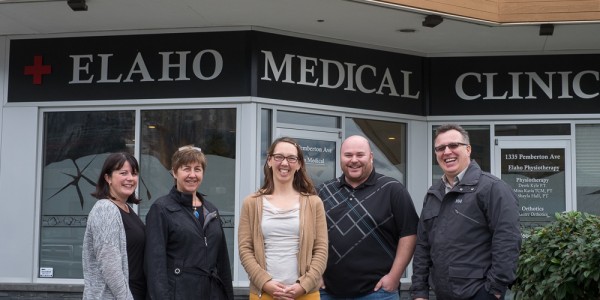Streamlining care for mental health patients with concurrent disorders
It was a challenge that sprang from weekly breakfast meetings between local physicians and the mental health addiction manager for the Sea to Sky Corridor – how to provide better and more streamlined care for mental health or addiction issues and/or concurrent disorders.
People who have combined substance use and mental health problems are said to have concurrent disorders (e.g. anxiety and a drinking problem, or schizophrenia and cannabis dependence). These patients often face barriers to treatment and other needs because our health and social care systems are not well equipped to address these combined complex health conditions
Kevin Fraser, Manager, Sea to Sky Corridor Mental Health & Addiction (MHA) Services, wants to change that. It’s why he joined forces with Squamish-area physicians and launched a pilot project titled “Assessment & Treatment Matching Interfacing with Primary Care” in June 2015.
We are continually trying to normalize mental health and addictions as health care issues,” says Kevin Fraser.
“We are addressing longstanding fragmentations between primary care and MHA and creating more timely and appropriate access to care. This initiative is designed to provide seamless patient flow between primary care (family physician practices, walk-in clinic and emergency department) and our MHA system.”
A fundamental challenge to providing evidence-based services for patients experiencing mental health and substance use concerns is coordinating a broad range of services and supports. Often there is little communication, let alone effective collaboration or integration, within and between MHA and primary care regarding these services and supports. This results in gaps in service and presents challenges for persons attempting to access services and supports. MHAS recognize the need to strengthen the timeliness of support and the appropriateness of interventions available for these individuals through a stepped care and integrated care model.
Primary care established as starting place for new referrals
The one-year pilot project is unique in that it has established primary care as a starting place for all new referrals and uses registered psychiatric nurses with concurrent disorders competencies to provide clinical support for either mental health or substance use presentations. Squamish currently has two specialized nurses who are part of the Assessment & Treatment Matching (ATM) team. They are the ones responsible for first point of contact with MHA.
For the duration of the pilot, the nurses are available Monday-Friday between1 – 4 pm to see patients where they normally see their own physician. Urgent cases are seen within a 24 hour period.
This pilot is being evaluated using a developmental evaluation approach, which supports learning to inform action within changing systems. Partners (physicians, clinicians, clients/families) in the initiative will participate in reflective dialogue to guide steps in the evolution of an interdisciplinary practice culture. Surveys will be used to inform quality improvement of the model and service delivery. Health care utilization data will support reporting of outcomes The data being tracked includes the number of referrals, wait times, treatment outcomes, rate of relapse, admissions and readmissions and the dynamics of time/scheduling for clients with concurrent disorders who present in primary care.
Unlike urban areas, rural communities have the extra challenge of creating and providing speciality services due to lack of staffing and resources. But for Kevin and his team, that challenge has translated into opportunity.
Rural communities face unique challenges
“The challenge here is the need to ensure staff are concurrent disorder savvy, but this is also a good reason to work more closely with primary care to ensure the most effective utilization of localized resources,” he says. “All clinicians are expected to work with primary care physicians in new ways, pulling them into the circle of care to improve communication, coordination and collaboration.”
While it’s still just a few months into the pilot project, Kevin is noticing positive changes.
“I’ve seen a shift in physician engagement between our clinicians and local physicians,” he says. “Of course we are in early days and practice doesn’t change overnight but all signs are indicating a desire to change the way we work together to improve the quality of care that our shared patients receive.”
An evaluation of the pilot will be completed next summer and used to inform how best to continue interfacing with primary care and how to use the lessons learned to explore expansion to other rural communities, such as Whistler and Pemberton.

